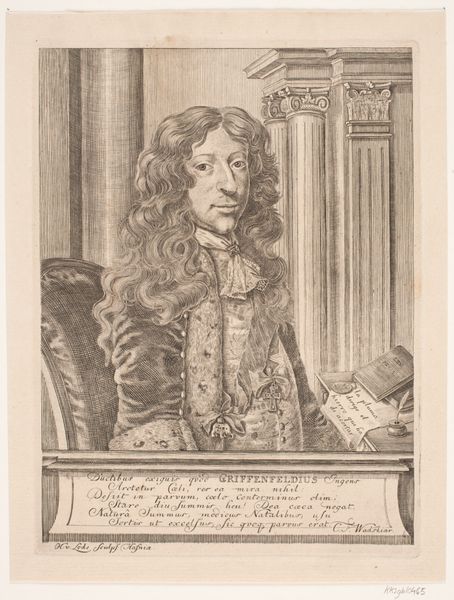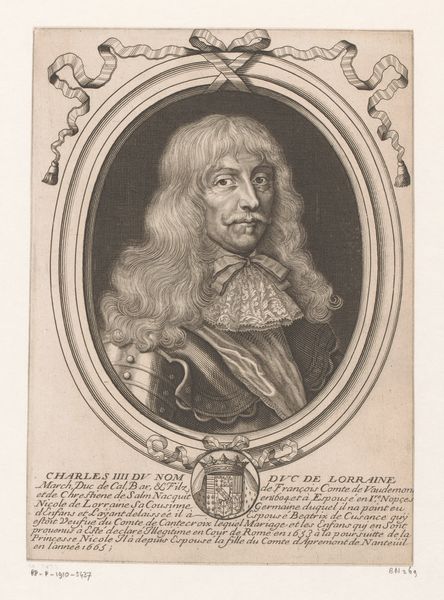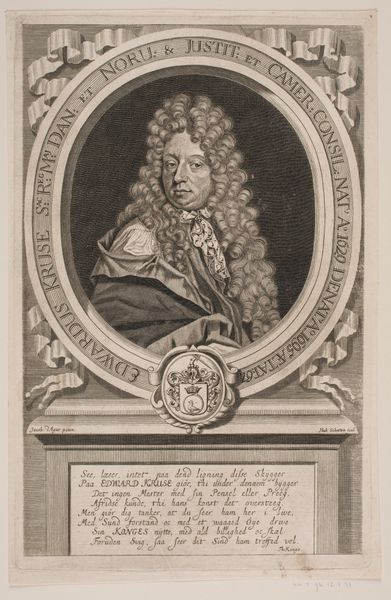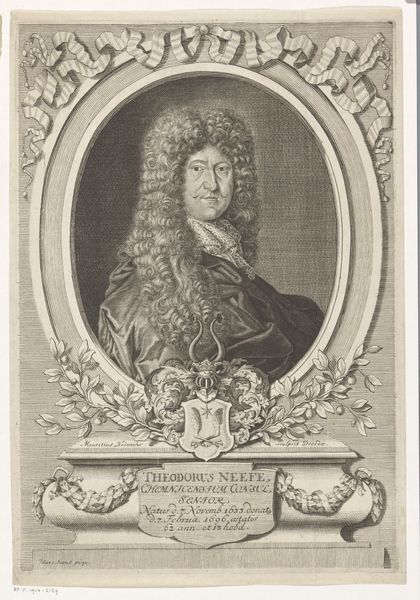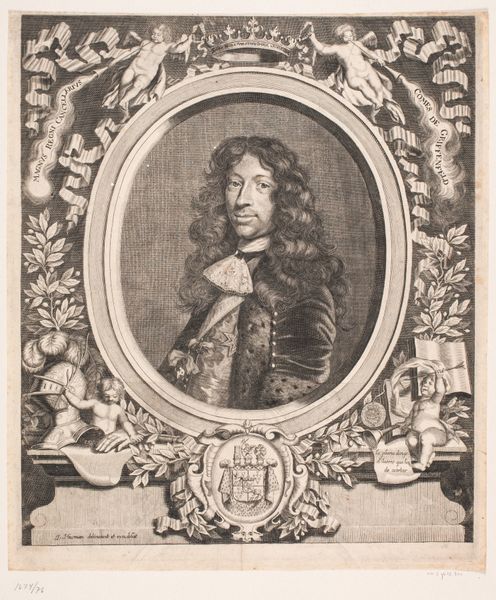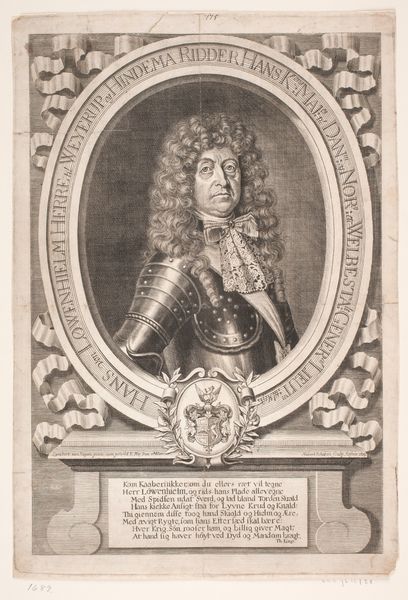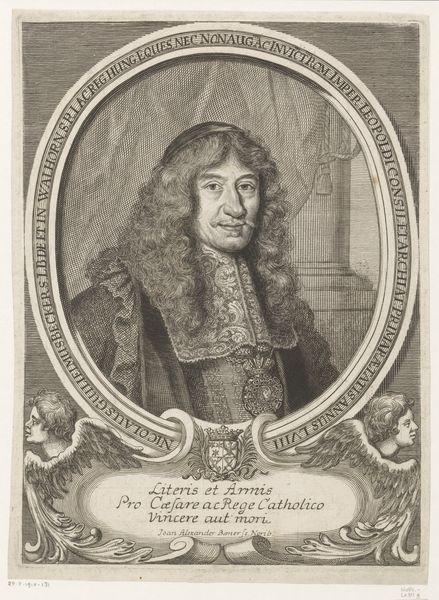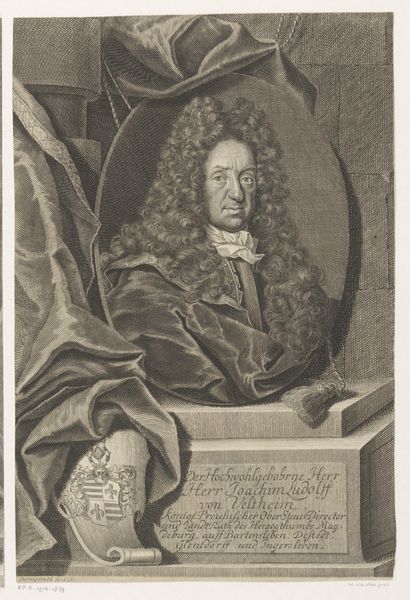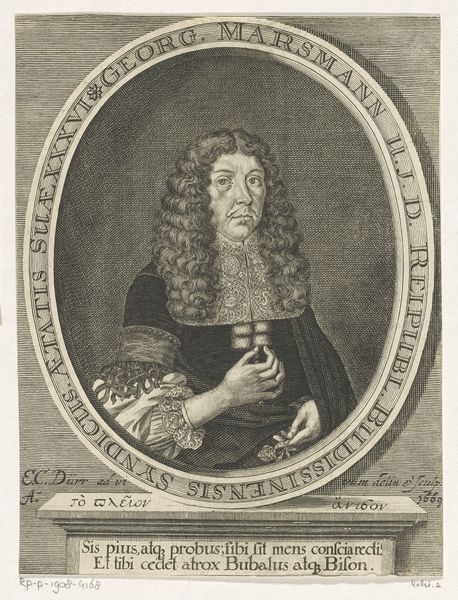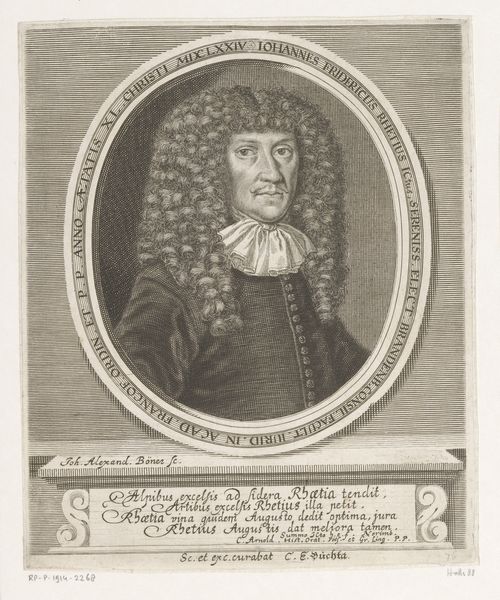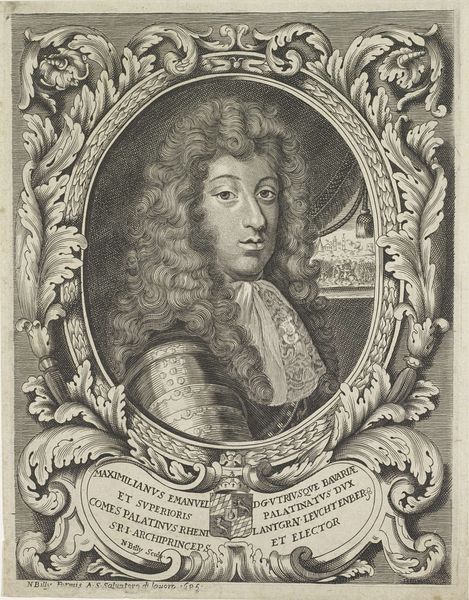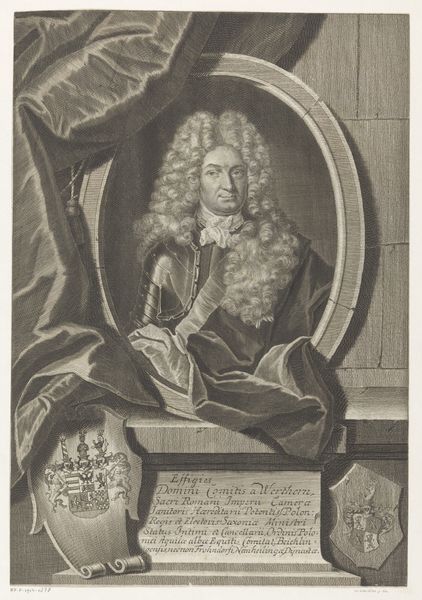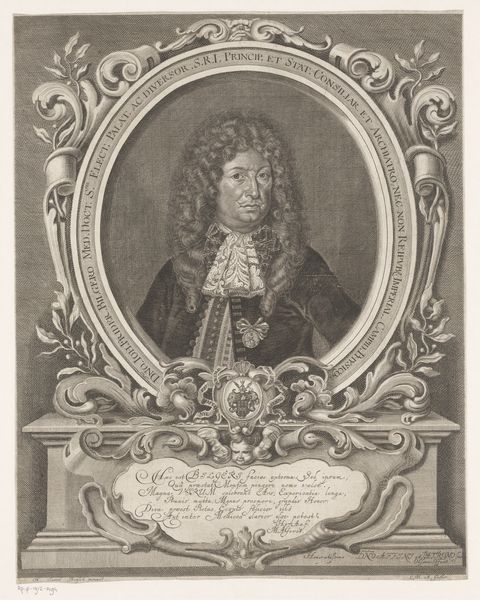
print, engraving
#
portrait
#
baroque
# print
#
history-painting
#
engraving
Dimensions: 194 mm (height) x 145 mm (width) (plademaal)
Odvardt Helmoldt de Lode created this engraving of Peter Griffenfeld in the mid-18th century. The printmaking process involves cutting lines into a metal plate, applying ink, and pressing it onto paper. The fine lines and intricate details, especially in Griffenfeld’s elaborate wig and clothing, are achieved through skilled use of engraving tools. The material qualities of the print – the texture of the paper and the density of the ink – give it a tactile presence despite its small size. This connects to broader social issues of labor and status. Printmaking allowed for the reproduction of images, making portraits like this accessible to a wider audience beyond the wealthy elite. It also represents a specialized form of labor, requiring both artistic skill and technical expertise. The image shows a world where luxury goods and artistic production were increasingly available, reflecting changing patterns of consumption and the rise of a commercial society. Ultimately, understanding the material and making of this engraving provides insight into the social and economic contexts of its creation, and how that relates to artistic practice.
Comments
No comments
Be the first to comment and join the conversation on the ultimate creative platform.
